UX/UI Design, Illustration, Android app development, Motion
Motionsense
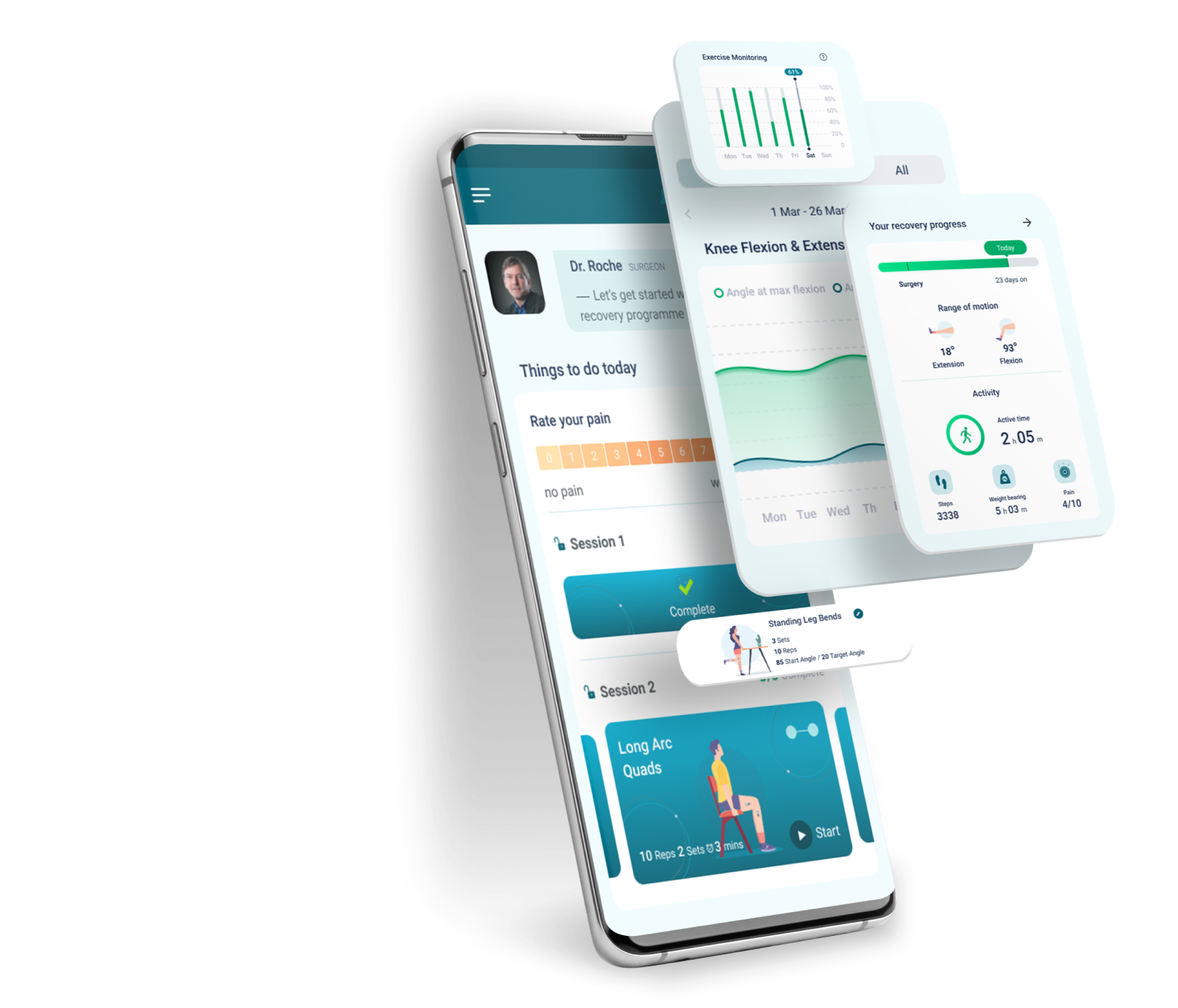
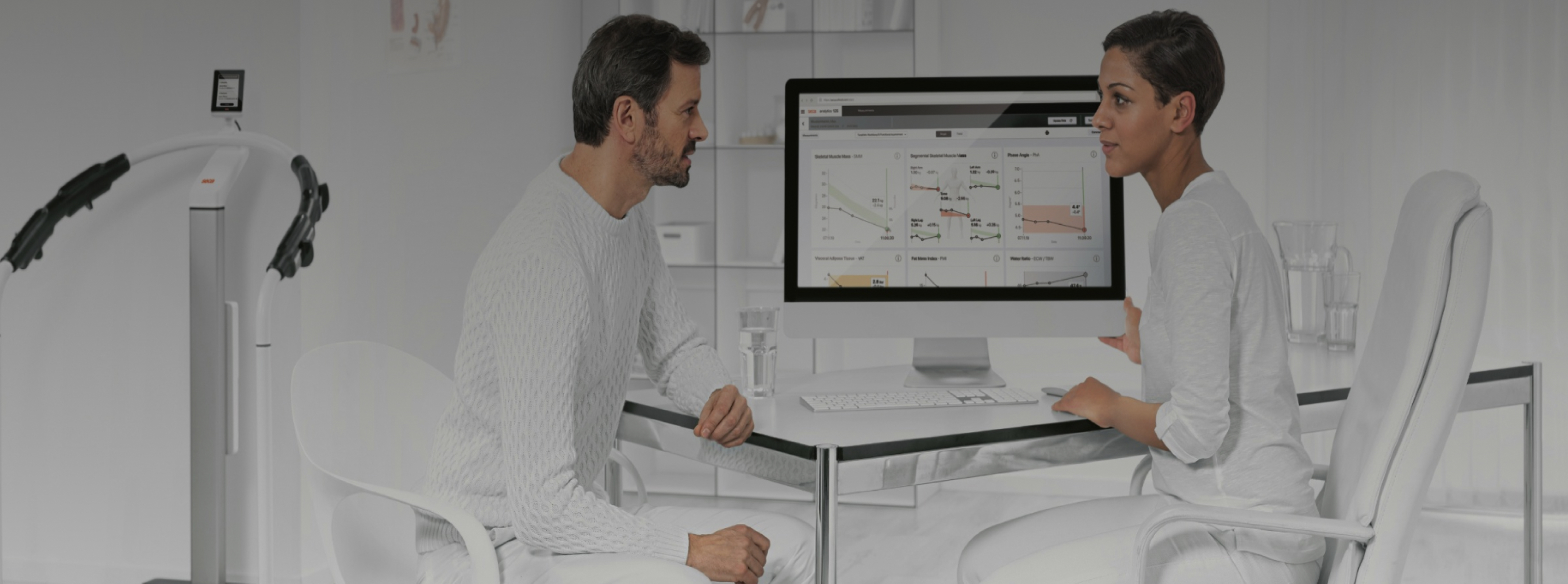
UX/UI Design, Illustration, Android app development, Motion
Motionsense

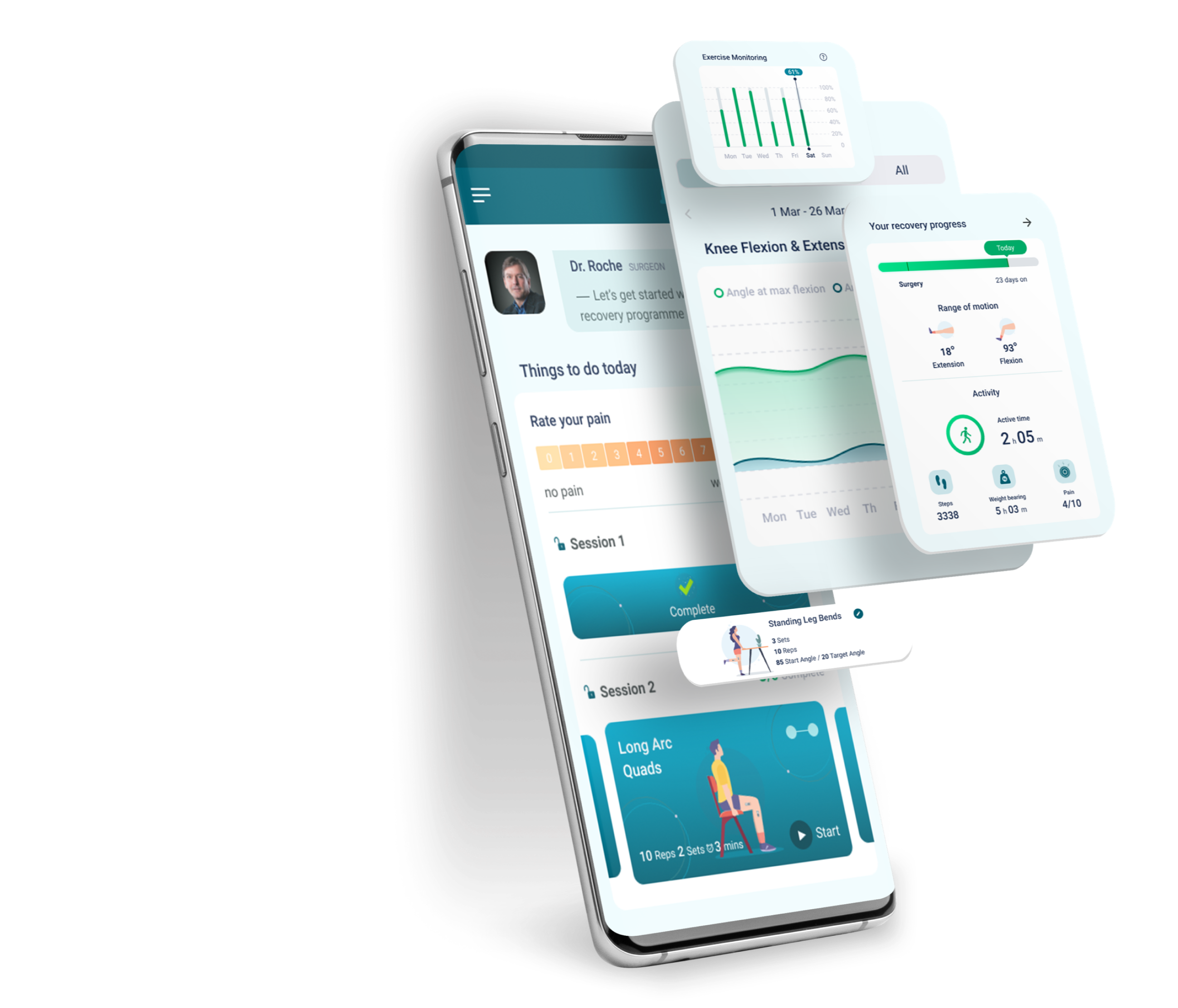
In real-time mode, the app displays the correct position of the leg and the target points to strive for. The exercises consist of repeated approaches, where you can observe an illustration that accurately replicates your movements. The app notifies you if you deviate from the specified angle of inclination.
The Project Team
Product manager, Project Manager, Android App Developers, Backend Developer, UX/UI Designer, QA Engineer
Technologies used
Swift, Kotlin, RIBs, AWS, Docker, Redis, Celery, PostgreSQL

The Challenge
Developing an app with clear and logical instructions was a challenging task. This was necessary to ensure that users could easily find their way around the app and use its features.
To further improve the app, we plan to implement the following features:
- A communication channel for users to request help or ask questions.
- Motivational elements, such as a rewards system, progress tracking, and motivational messages.
- Direct access to rehabilitation experts or a doctor through the app, allowing users to receive personalized advice and adjust their rehabilitation plan according to their needs and progress.
Our impact
Systematic Pain Tracking Feature:
Our application empowers users with the capability to systematically track and document their pain levels. This serves as a crucial tool for monitoring progress and objectively assessing the effectiveness of rehabilitation interventions. Pain tracking enables us to understand how each user responds to rehabilitation exercises, allowing us to make necessary adjustments for maximum efficiency.
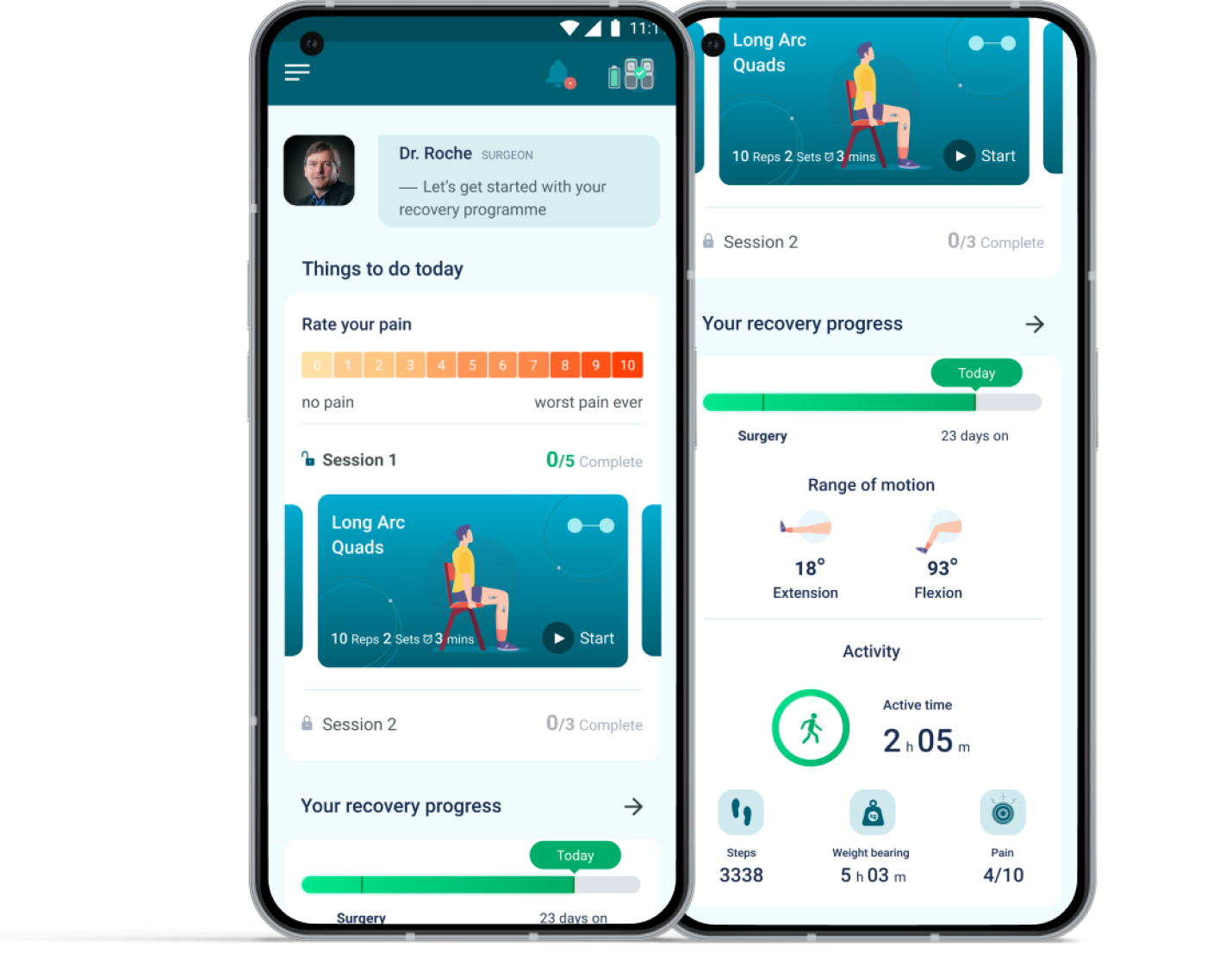
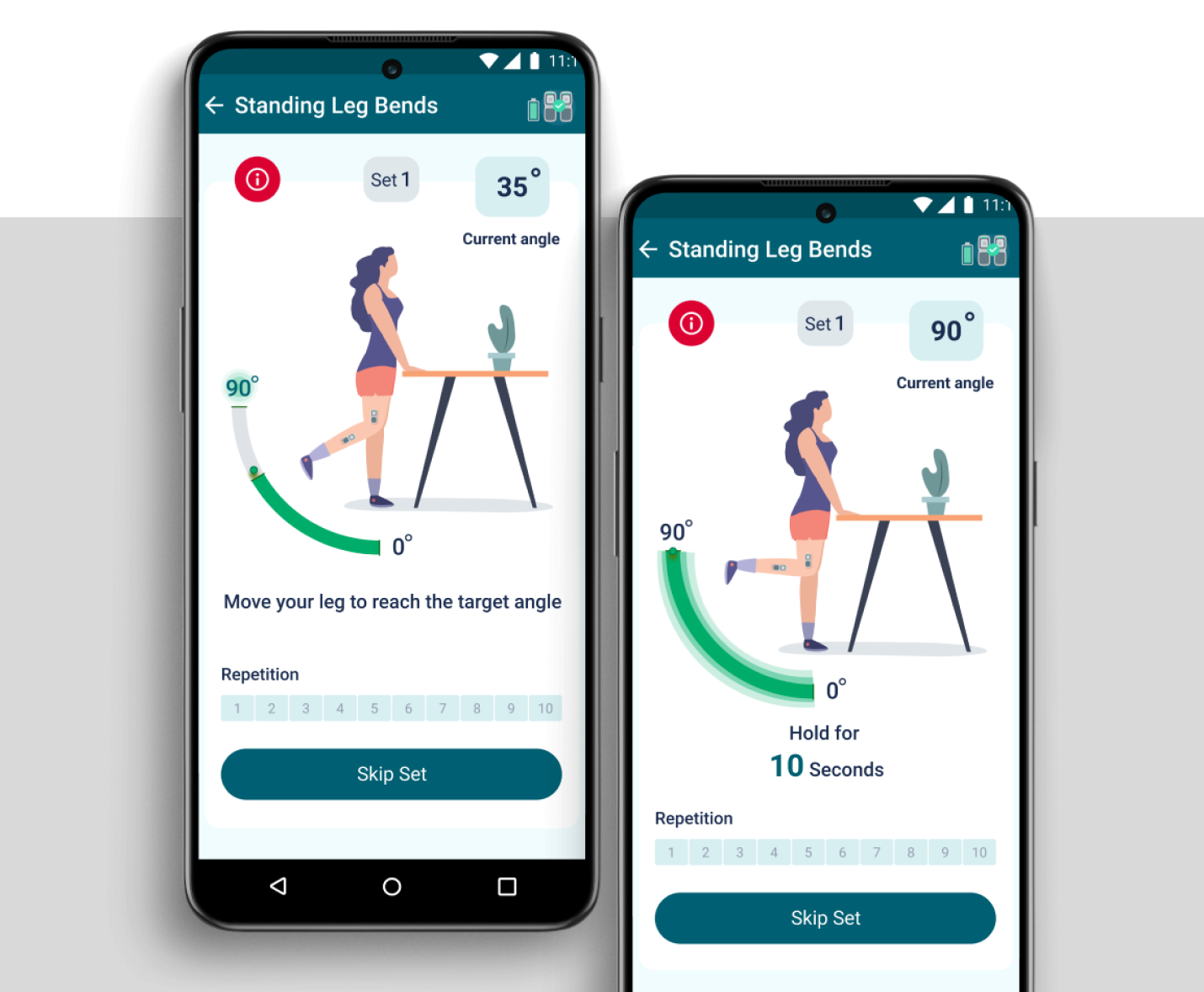
Visual Representation of Rehabilitation Exercises:
Rehabilitation exercises are now visually represented on the main page of the application. This provides users with easy access to exercises and encourages them to engage in regular physical activity to improve knee function. Convenient access to exercises promotes active participation and sustains continuous progress.
Progress Displayed Through Graphs and Statistical Data:
User progress is showcased through graphs and statistical data illustrating achievements throughout the rehabilitation process. This not only serves as a source of motivation but also provides users with positive feedback on their progress and accomplishments. Visualizing results acts as a powerful stimulus for further efforts and instills confidence in success.
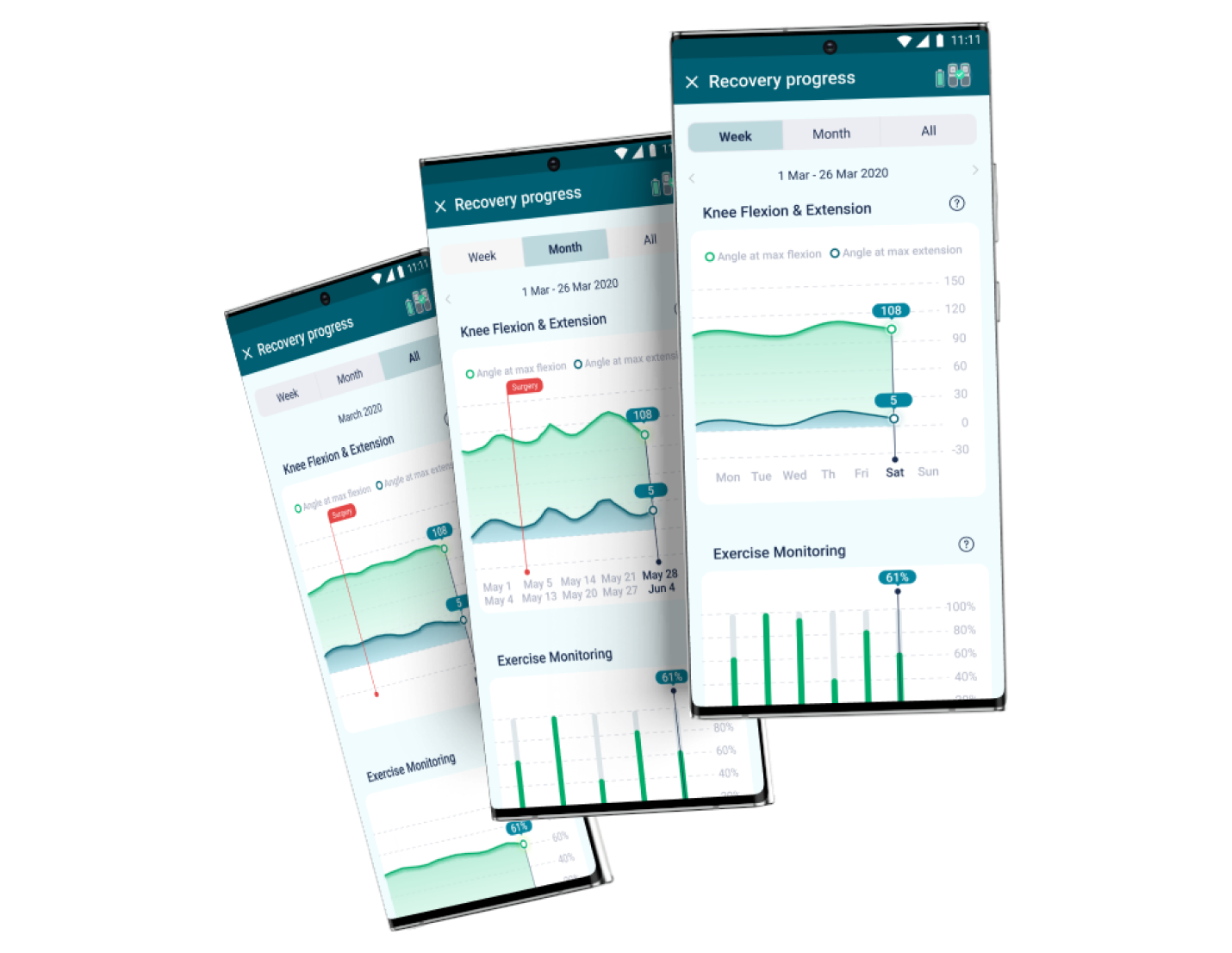
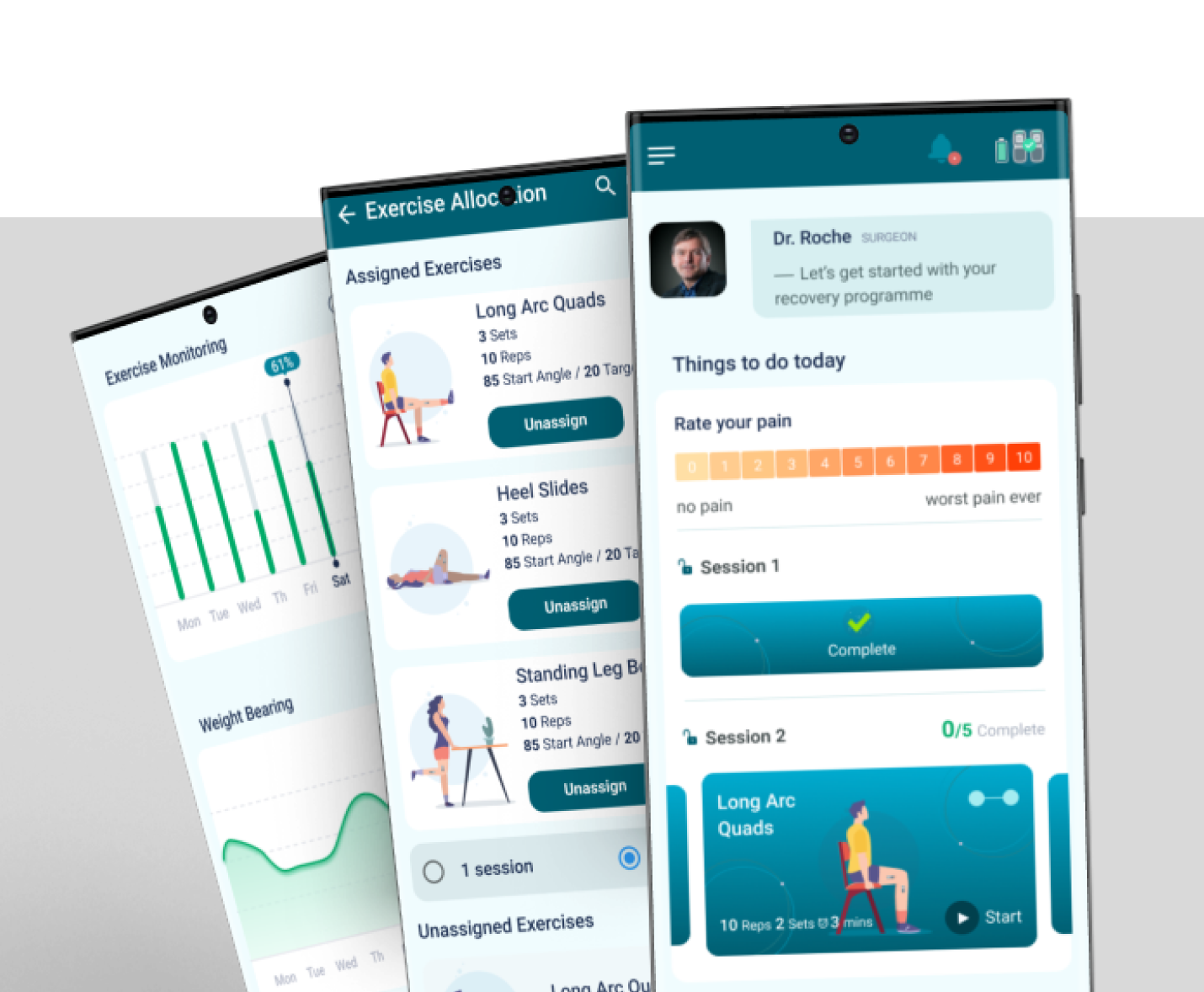
The Solution
Our technical support management system aims for prompt resolution of technical issues, such as sensor connections and compatibility with various devices. Automatic program updates address compatibility problems and enhance stability. Our program fosters motivation and sustains user interest through the introduction of diverse exercises and gamified elements. Periodic challenges and goals support user motivation on the path to recovery.
Emphasizing the importance of medical support, our application includes warnings and reminders. Providing resources for communication with medical professionals ensures a comprehensive approach to rehabilitation, where the use of the program complements rather than replaces personal interactions with doctors or rehabilitation specialists.
With these measures in place, we are confident that our program will not only be an effective rehabilitation tool but also a source of continuous motivation for our users.
The Result
It was important to make onboarding simple and easy for users, providing them with the information, training materials and support they need. By following these steps, we were able to create a positive app experience for our target audience. Provided detailed instructions and illustrations that explain how to use the application, how to correctly perform exercises, and how to interact with special sensors if they are used.
Rehabilitation exercises presenting as a list and visually displayed on the main page. This enable users to easily access and engage in regular physical activity to improve knee function. In addition, specifying the range of motion for lifting the leg provides users with guidance on the appropriate height or angle to aim for during the exercise. This helps ensure that users are performing the exercise within the desired range and can track their progress over time.
